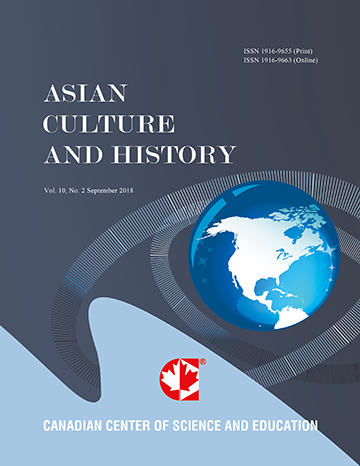Murals in Buddhist Buildings: Content and Role in the Daily Lives of Isan People
- Thawat Trachoo
- Sastra Laoakka
- Sisikka Wannajun
Abstract
This is a qualitative research aimed at assessing the current state of Buddhist murals in Northeastern Thailand, the elements of society they reflect and their role in everyday life. The research area for this investigation is Northeastern Thailand, colloquially known as Isan. Three ethnic communities were purposively selected to comprise the research populations. These were the Tai Korat of Nakhon Ratchasima Province, Tai Khmer of Buriram Province and Tai Lao of Ubon Ratchatani Province. Data collection tools were basic survey, participant and non-participant observation, structured and non-structured interview, focus group discussion and workshop. Results show that there are two major groups of Buddhist temple murals in Isan: those depicting ancient culture and customs painted prior to 1957 and contemporary murals painted after 1957. For the most part, murals are found on the walls of the ubosot and the instruction halls of the temples. The objectives of mural paintings were to worship the lord Buddha, decorate the temples, provide education to community members and maintain historical records. The paintings are often simple depictions of everyday life with holy or important objects and figures drawn at the tops of the walls, the main story in the middle of the walls and the common man or hell at the base of the walls. The disappointing element of mural creation is the common scenario of covering the murals after creation for protection. Also many people do not understand the stories represented in the drawings. The murals continue to play a role in encouraging community discourse and teaching people how to behave appropriately in society.
- Full Text:
 PDF
PDF
- DOI:10.5539/ach.v6n2p184
Journal Metrics
Google-based Impact Factor (2017): 5.42
h-index (January 2018): 11
i10-index (January 2018): 21
h5-index (January 2018): 6
h5-median (January 2018): 9
Index
- Academic Journals Database
- CNKI Scholar
- COPAC
- EconPapers
- Elektronische Zeitschriftenbibliothek (EZB)
- Excellence in Research for Australia (ERA)
- Genamics JournalSeek
- Google Scholar
- Infotrieve
- LOCKSS
- MIAR
- NewJour
- Open J-Gate
- PKP Open Archives Harvester
- Publons
- RePEc
- Scilit
- SHERPA/RoMEO
- Standard Periodical Directory
- Technische Informationsbibliothek (TIB)
- The Keepers Registry
- Universe Digital Library
- WorldCat
Contact
- Ivan YongEditorial Assistant
- ach@ccsenet.org
